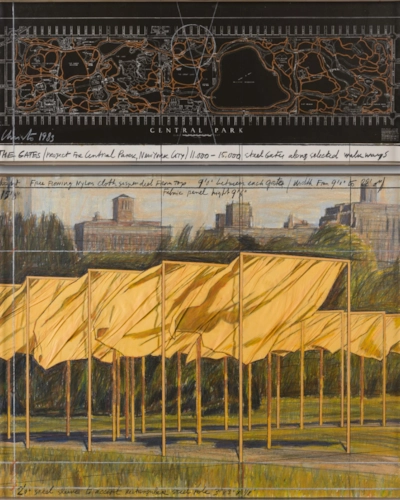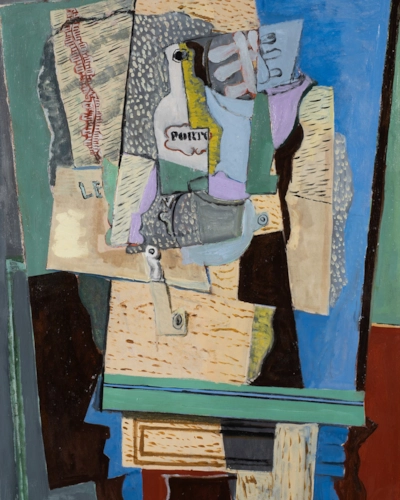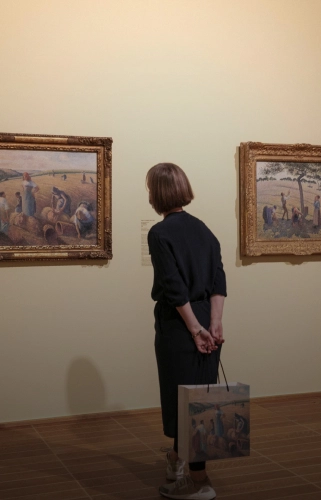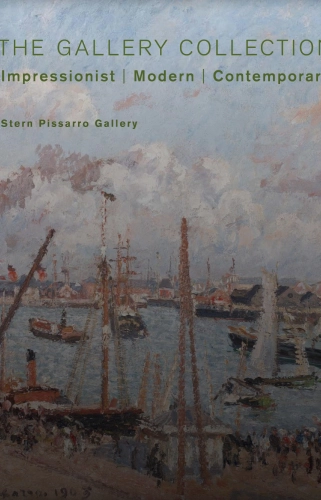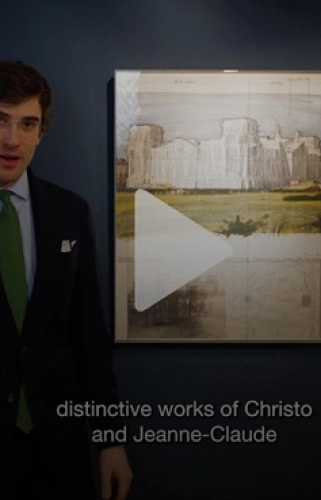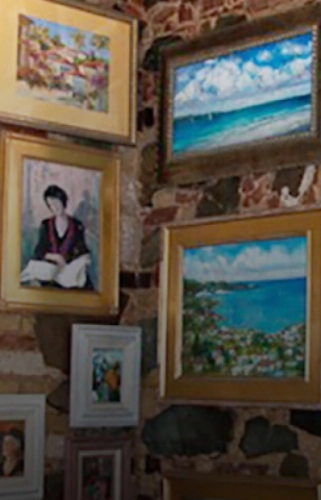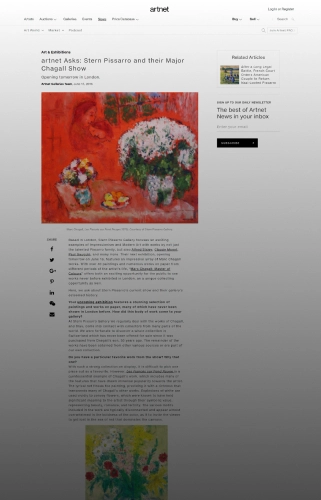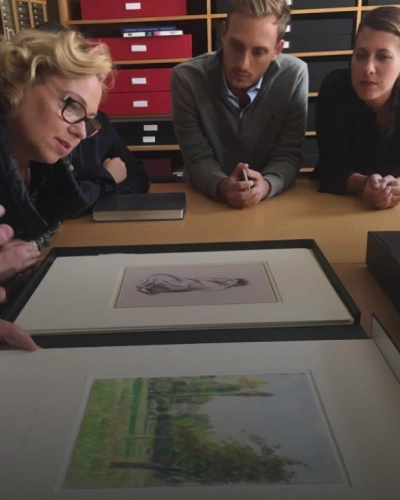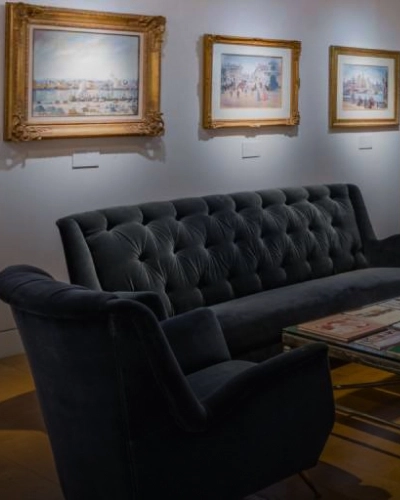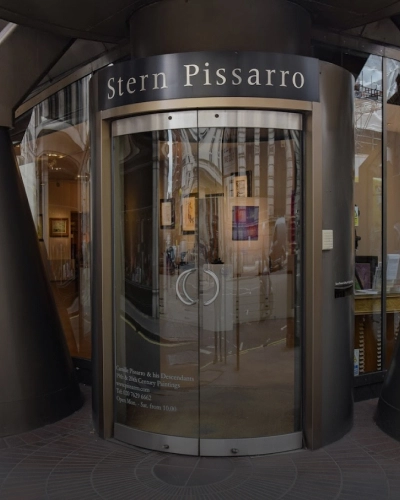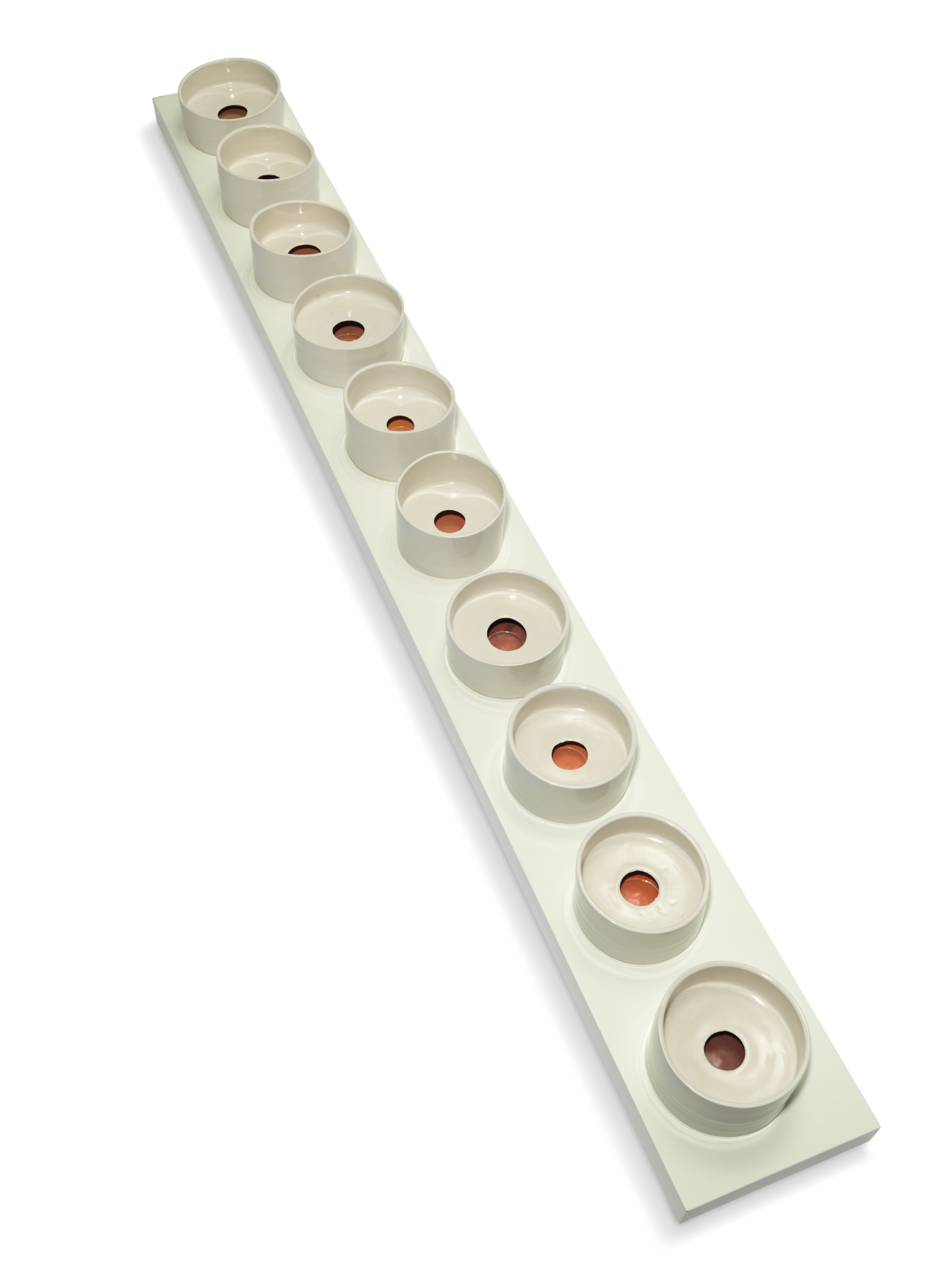Edmund de Waal
b. 1964
Colourfield
Largest 9.2 cm in height by 19.9 cm in diameter (3 ⁵/₈ x 7 ⁷/₈ inches)
Impressed with the artist's seal on the underside of each vessel
Executed in 2004
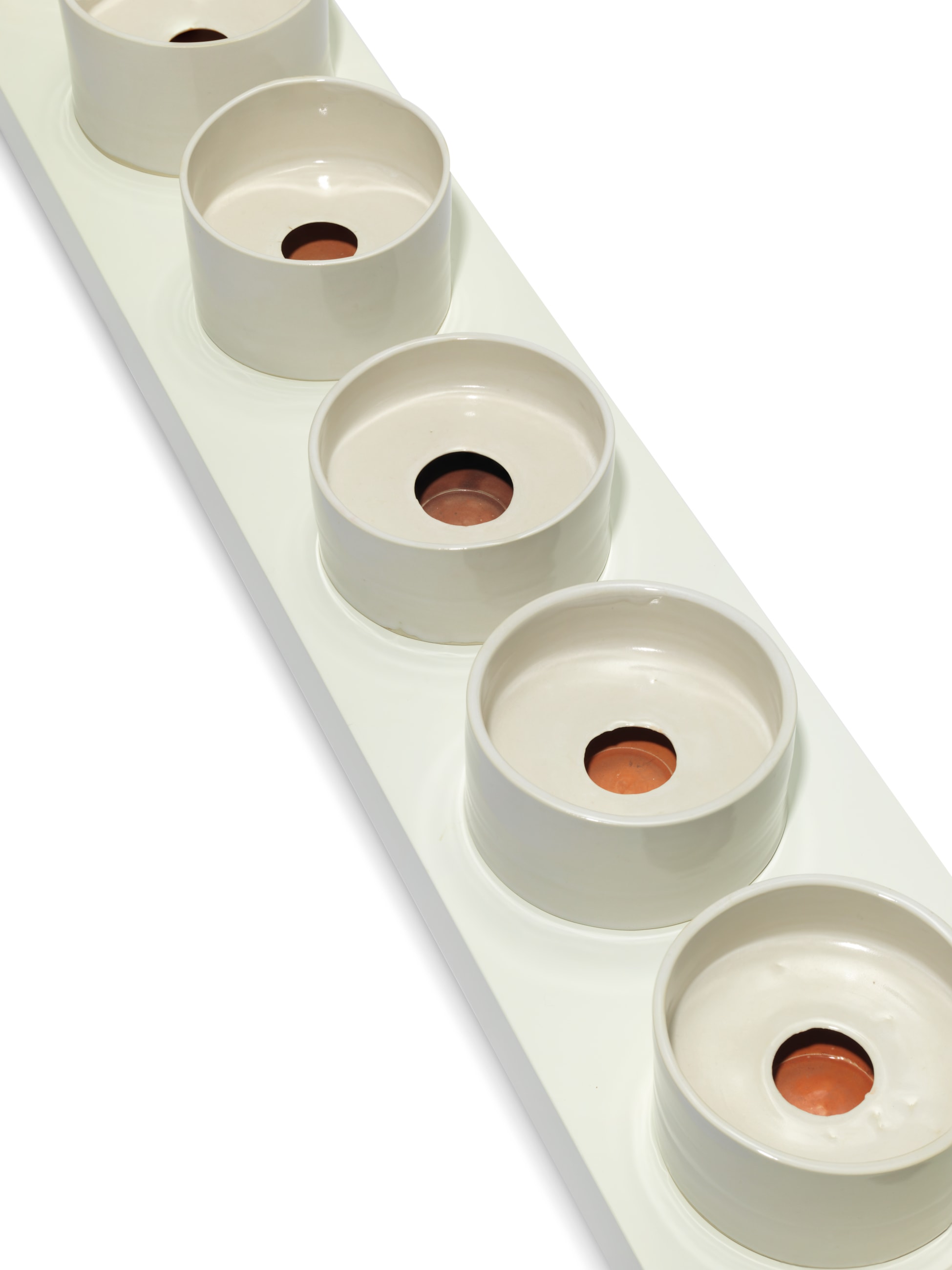
“I work with things. […] And then I arrange them, find places to put them down, on shelves or within vitrines, in houses and galleries and museums, move them around so that they are in light or in shadow. They are installations, or groupings, or a kind of poetry. They have titles, a phrase or a line that helps them on their way in the world.”
This original artwork by Edmund de Waal is available for immediate purchase.
Edmund de Waal
biography
De Waal’s career was greatly impacted by his time working in Japan. Following his move to the country in 1992, he became interested in the belief that the East and West could meet through the materiality of porcelain. His art not only transcends continental boundaries, but also overlaps with poetry and music. As he studied for an English degree at Cambridge while embarking upon his pottery career, it is unsurprising that he maintained his literary interest throughout his lifetime. Again, this highlights De Waal’s ability to expand and challenge any presupposed limitations of ceramics, and despite his clear self-crafted identity as a potter, we can consider him an interdisciplinary figure.
Exhibiting extensively within the United Kingdom, as well as internationally, in recent years his work has been displayed at the Royal Academy of Arts, London (2015) and the Venice Biennale (2019). His works are held in the permanent collections of numerous institutions, such as the V&A; Ashmolean Museum, Oxford; National Museum of Scotland Edinburgh; Museum of Arts and Design, New York; Museum of Decorative Arts, Montreal; and Museum of Western Australia, Perth.
Edmund de Waal
biography

